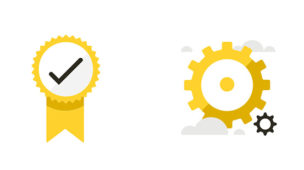Trying to figure out how much a project might cost, comes down to being able to estimate your time effectively. We’re well accustomed to this having worked on hundreds of products and services over the years.

No two projects are alike and the factors affecting time for each vary greatly, so we must fully understand the brief, context and objectives in order to come to an estimate. When a new client approaches Every Interaction we would ask the following questions.
1. Where you are at today?
Everyone’s starting point is different, but is likely to fall into one of these buckets:
- New products. Your product may not exist yet – it could just be an idea that you need to validate then launch your first MVP.
- Customer-ready. Your product might not have launched yet, but some work has already been done, and you need our help to get it market-ready.
- Improve your product. You may have a product that is already live and you may have received some feedback that prompted you to make changes, or there’s a need to grow (or reduce) the feature set to create a better user experience.
- Iterate on your product. You product may have been around for a while and you just need some help to maintain it by optimising some journeys, or making minor improvements.
2. Clarifying the right problem to solve
To be able to cost a UX Design project, we first need to understand what you hope to achieve. We need to ask important questions such as;
- Who is the customer?
- What problems are they facing?
- Why are these problems important to them?
Without answers to these questions we cannot effectively design something that will benefit your customers or your business. It’s very important to understand the context around the problem, and not just the execution details of what we’re being asked to do. The correct context gives us the correct frame of reference to understand how to proceed. This process also validates the brief, decreasing the risk of your investment.
If you don’t yet have answers to these questions we can offer an isolated discovery phase that helps do the required user research, competitive and data analysis.
3. What do we need to do?
Given the above we can move onto the finer details of what we need to do. This is defined by the goals of the project. We need to know the detail of what your idea is so we can size up the effort involved to deliver it. There maybe restrictions around the technology or existing functionality we must take into account. Defining what we need to do in advance helps prevent overspending later.
4. How does it work?
To figure out how we deliver what you need, we need to understand how it works. We might ask questions like:
- How many steps are in certain user flows to complete a task?
- What happens to a user’s account when they take a certain action?
- What data do we need to collect to make the action viable?
Not everyone has answers to all these questions in advance – which is fine, we can help you get there. The more answers we can get, the more accurate our estimations can be. The end result of this is a list of user stories that describe the set of actions a user might take in what we are designing. A set of user stories provides us with a more more granular task list against which we can assign hours to complete.
5. How much testing can we do?
The correct answer is always “as much as possible”. Without user testing we cannot validate any of the design decisions we are making. Designing and building a fully functional product can take a long time and represent a significant investment. Before committing all of that investment into an idea, it’s important to validate how well it actually solves the problem you identified. Testing allows us to reduce the risk whilst optimising performance. Testing early and often leads to best results. If budgets are limited we can pick the optimal points in the project lifecycle to inject testing to maximise the return.
6. How will we work with your team?
This helps us understand our final deliverables. Some clients come with their own development teams, which is fantastic. Firstly we need to know how they like to work, and ensure we slot right into that workflow.
We need to involve your team in the process and work with them closely throughout all workstreams to ensure everyone is on the same page about what we are trying to achieve, and there are no costly surprises along the way.
We can always help with the development too. We’ll work out the skills needed together and the use required specialisms to help get your project delivered.
Summary
Given this information we should have enough detail to cost up your UX Design project. It sounds like a lot, but we can usually get all the information we need in a 60-90 minute call or meeting. We take this all away, do our calculations and present back our proposal.
If there is not enough detail in your brief or specification to create an accurate estimate, we can always sell an isolated discovery phase. This grants us the time to do the the required research and work with you to flesh out the detail to give you a comprehensive brief. Using this output we can accurately cost your project, or you can take this document and get others to quote too.
If the resulting calculation is large, we might suggest breaking off a scope exercise that demonstrates our process, value and skills, before committing to a larger contract. If the result is not within budget, then we have a starting point to decide what we change to try and bring it in on budget. If we are told the budget in advance we can always design our proposal to fit within it in advance, saving time. We might not need all your budget to achieve what you are asking, leaving more to assign to other areas, or future phases of the same project.
Not all projects need to be a fixed deliverable. If you want to work in a more agile way we can complete a quick discovery process then work alongside your product team. With agile you cannot fix deliverables, so we tend to sell in time as sprints, which vary depending on the team we need to assign to achieve your goals. We can either sell a one or two week long design sprint to demonstrate value as a low risk test in advance of any longer contracts.
What’s important is that you follow a user centred design process. If you are not putting your users at the heart of the product decisions you are making, the changes are unlikely to be an improvement for either the user or the business.
If you have a project you’d like to discuss, we’d love to hear about it. Please call us on 020 3653 1310 or send us an email to kickstart the conversation.


